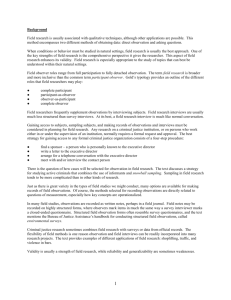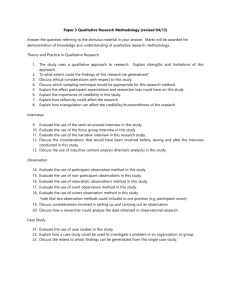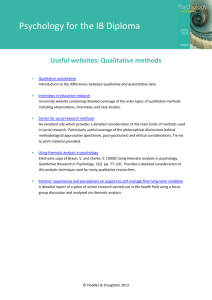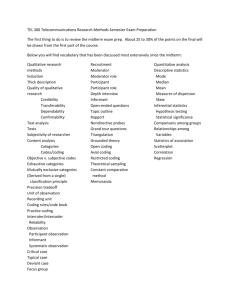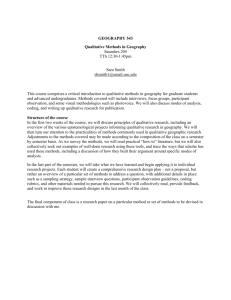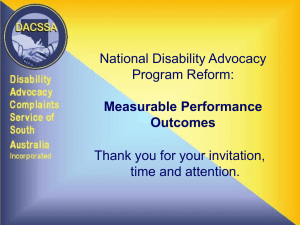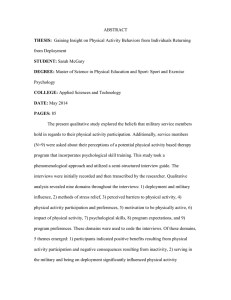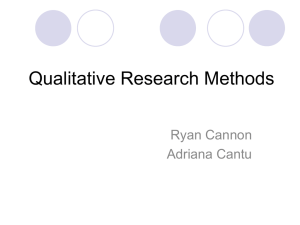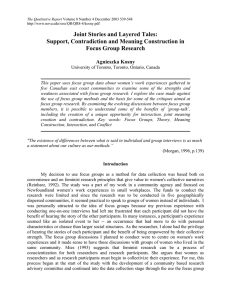Methods Overview Ppoint
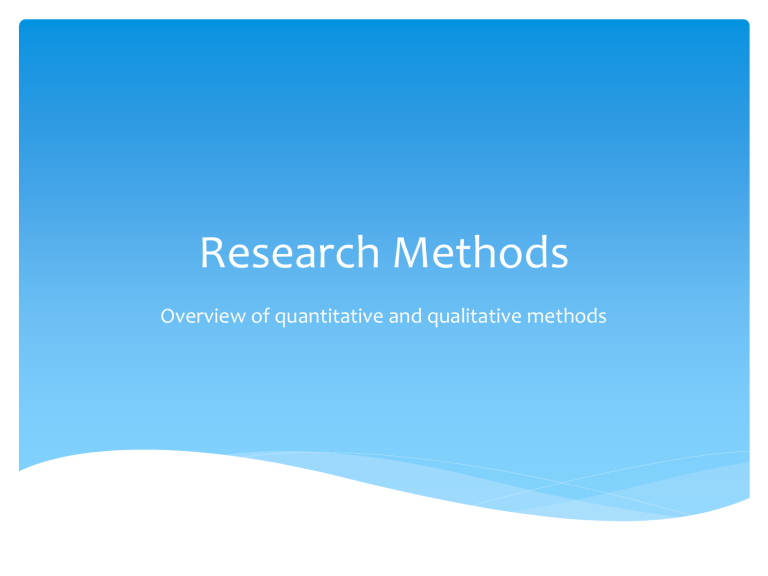
Research Methods
Overview of quantitative and qualitative methods
Quantitative Methods
Survey methods
Experimentation
Social network analysis
Data visualization
Spatial analysis
Survey Methods
Survey design
Population and Sample
Instrumentation
Variables
Analysis and interpretation
Experimental design (or not)
Survey Design
Why surveys?
What’s the purpose?
Population and Sample
Identify your population
Identify your sampling design (single stage, cluster)
Identify your selection process (random, systematic, convenience)
Will you stratify?
Population and Sample - Example
Identify your population (MOSS K12 students)
Identify your sampling design (single stage, cluster)
(Cluster – draw from schools)
Identify your selection process (random, systematic, convenience) (systematic)
Will you stratify?
(Yes – 3 rd and 4 th grade, 5 th and 6 th ,
7 th and 8 th graders)
Instrumentation
Name the instrument you will use (your own design?
Modified from another? In tact from another?)
Describe its validity and reliability
Cover letter
Pilot testing
Procedures for administering the survey
Instrumentation - Example
Name the instrument you will use (DeWaters and Powers’ energy literacy assessment, 4H science process skills inventory, our own science identity scale)
Describe its validity and reliability
Cover letter
Pilot testing
Procedures for administering the survey (given when students arrive and after their inquiry presentations on
Friday)
Variables
Associate with items on your survey
Identify independent, dependent
Analysis
Response / non-response bias
Descriptive analysis
Inferential questions and hypothesis testing
Data display
Experimental and Quasi-
Experimental Designs
Pages 172 – 173 in Creswell
Qualitative Methods
Characteristics of qualitative
Naturalistic setting
Researcher as instrument
Multiple sources of data
Inductive and deductive analysis
Participants’ meanings
Emergent design
Holistic account
Reflexivity (reflection)
Qualitative Data Collection
Observation
Interviews
Document review
Audio and video materials
Observations
Complete participant
Observer as participant
Participant as observer
Complete observer
Interviews
Face to face
Group
Single person
Phone / video / email
Document review
Public Private
Data Recording
Interview or observation protocol
Record “field notes”
Audio or video record interviews
Transcribe interviews
Data Analysis
Raw Data
Organize data
Read through data
Code data
Themes and Description
Interpretation
Validity and Reliability in Qualitative
Methods
Triangulation
Member checking
Thick, rich description
Clarify researcher perspective
Negative case
Prolonged time in the field
Peer debriefing
External audit
Mixed Methods
